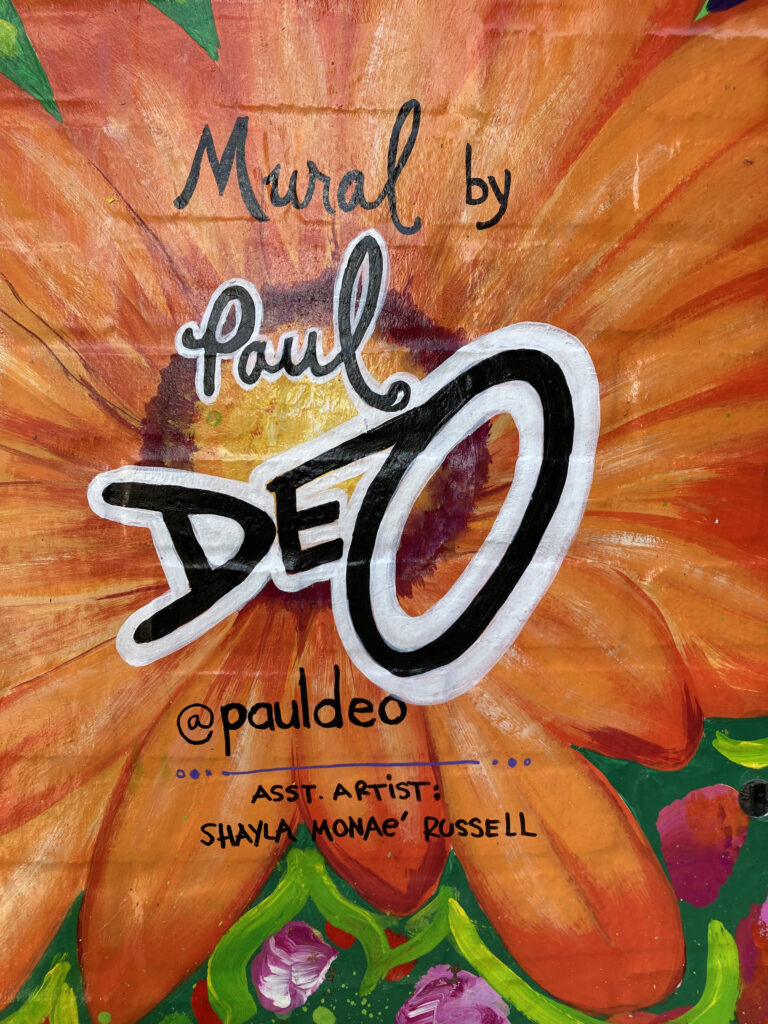
Photo by Síle Moloney
Participants in Mosholu Montefiore Community Center (MMCC)’s Restorative Justice Program were joined by community members and participants in other MMCC programs offered by the Norwood-based community center for the 2023 Bronx Paint Fest Party on Saturday, May 13.
During the free event, organized by NYC Mural Arts Project and other groups, the group spent the afternoon painting the mural on one of the outdoor walls of the Center, located at 3450 Dekalb Avenue between East Gun Hill Road and Kossuth Avenue in Norwood. In addition to the mural painting, the theme of which was positive mental health, there was also music, food, games, and a general focus on wellness.
Tashan Dawkins, director of youth services at MMCC, said its Restorative Justice Program is a 22-week program comprising various workshops which focus on empowering youth and bringing awareness to various topics, including self-esteem, violence, peer pressure, gang involvement, trauma, gun violence, and incarceration. “[It] was funded by Assemblyman Jeffrey Dinowitz (A.D. 81),” Dawkins said. “Because of his generous donation, we were able to provide the services for one year and then we’re approaching the second year.”
Explaining that the program is promoted by word of mouth, Dawkins said, “So, each week we just tackle a different topic. Restorative Justice is focused on rebuilding communities and families that are affected by crime. Some programs aim to serve youth between the ages of 12 and 21. We use an evidence-based curriculum that educates young people on the effects of crime and consequences, and all of our activities and programs are designed to promote change in attitudes and behavior that will ultimately help them in preventing future crimes.” Dawkins said the program also focuses on accountability. “We promote social-emotional growth and support behaviors within the community,” he added.
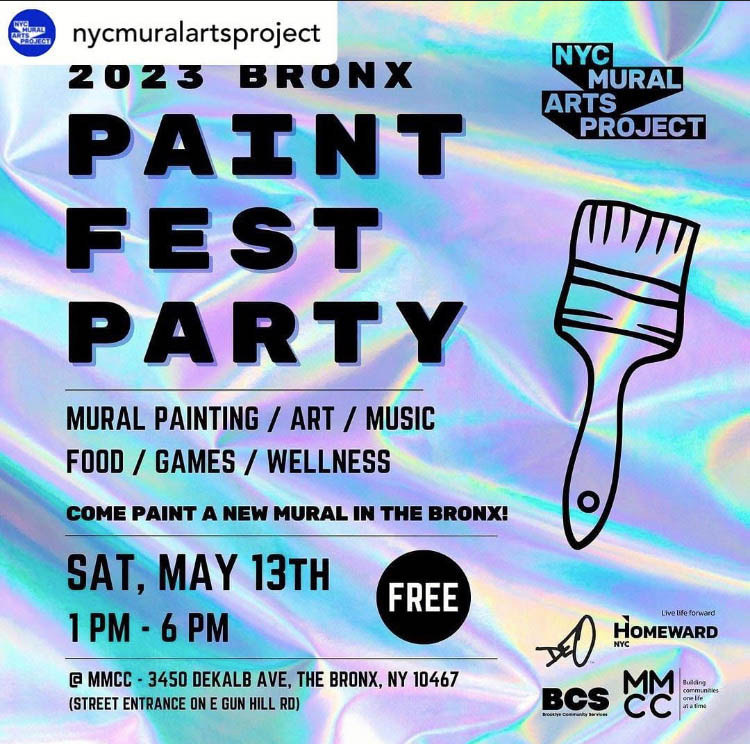
Flier courtesy of the event sponsors
Dawkins went on to explain that the group meets every Monday and comprises about 35 to 40 young men and women. He said they also participate in mentoring circles. “So, typically what happens is 6 to 6.30 (p.m.) is arrival, and then we feed them during that timeframe and then at 6:30, we have the mentoring circles,” he said. “Since we use the evidence-based curriculum, each week we have a different topic that we either talk about or have representatives come share their story, and come talk about experiences.”
Dawkins said visitors could include a representative from the judicial system or a person who “counters with society itself,” and who talks about how they turned their experience around and where they are now. “So, for example, we had a gentleman who is the founder of the Walter Cook Foundation, it’s an OSHA [Occupational Safety & Health Administration] program, [a] safety program, but he’s a true testament of what the young people can relate to,” Dawkins said.
He went on to say that the person in question had been incarcerated for a couple of years, came home, started his own OSHA safety business, and now provides training not only to “court-involved people,” but to regular people looking to take their OSHA and flagger certificate. [A construction flagger’s primary responsibilities are to communicate with drivers and teammates to ensure traffic safety through construction work zones.]
“So he’s actually one of the individuals we work with,” Dawkins sad. “We pay for the OSHA classes, OSHA 40, so they get the OSHA 30 and the site safety, a 10-hour certificate as well as the flagger, and then he can also find them a job. So, anyone that’s over the age of 18, from 18 to 21 and they express an interest, we sign them up for it and they participate in it… so that’s just one of the few things.”
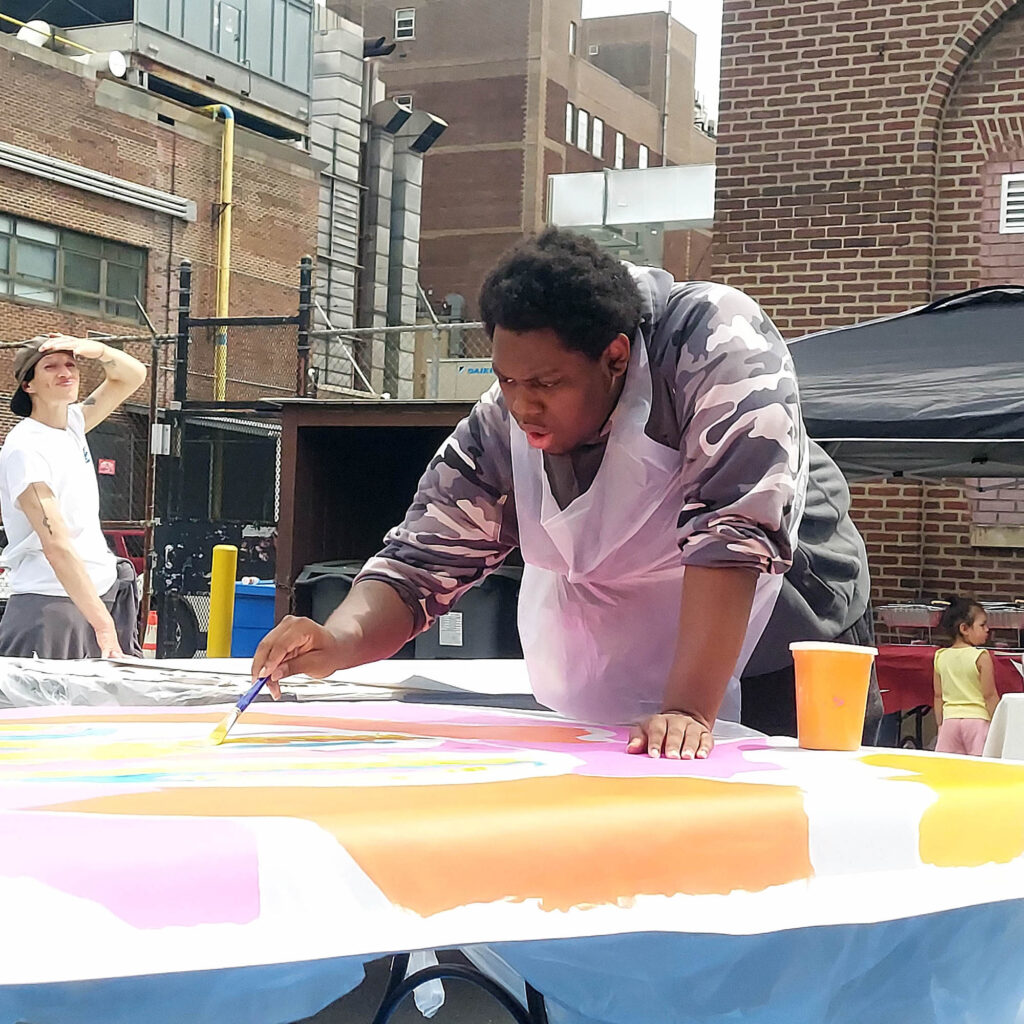
Photo by David Greene
Dawkins said some of the young people participating in the program may also need to get their GEDs (General Equivalency Diploma). “We refer them to our in-house GED program at MMCC,” he said. “We also [do] post-secondary. If folks complete high school and they’re exploring college as an option, we actually also have college prep here.”
He said they also have a workforce development program for those who express a specific interest in a certain trade. “We refer them with outside agencies,” Dawkins said. “So, one of the things that our young people had expressed interest in was [a] barbershop and so, we were able to find an organization that teaches the fundamentals of barbershop: either a seven or [an] eight-week program that teaches them the foundation of the skill. A few of our young people have gone through that.”
Dawkins said the program began in 2021 and in the beginning had a mixture of young people. “So, we have a few that are court-involved,” he said. “We have some that the ACS [NYC Administration of Children’s Services] referred, some that are in our teen program that would like to change their mindset because of what they’re experiencing outside of our doors. So, they don’t want to fall into that stigma or end up in jail, so we don’t turn anyone away. We’re just focusing on strengthening and rebuilding the community for families and young people that have been impacted by crime – whether they have been impacted directly or indirectly. Let’s say if I’m in the program and my mom or my dad is incarcerated, we will still allow that participant to participate in the program.”
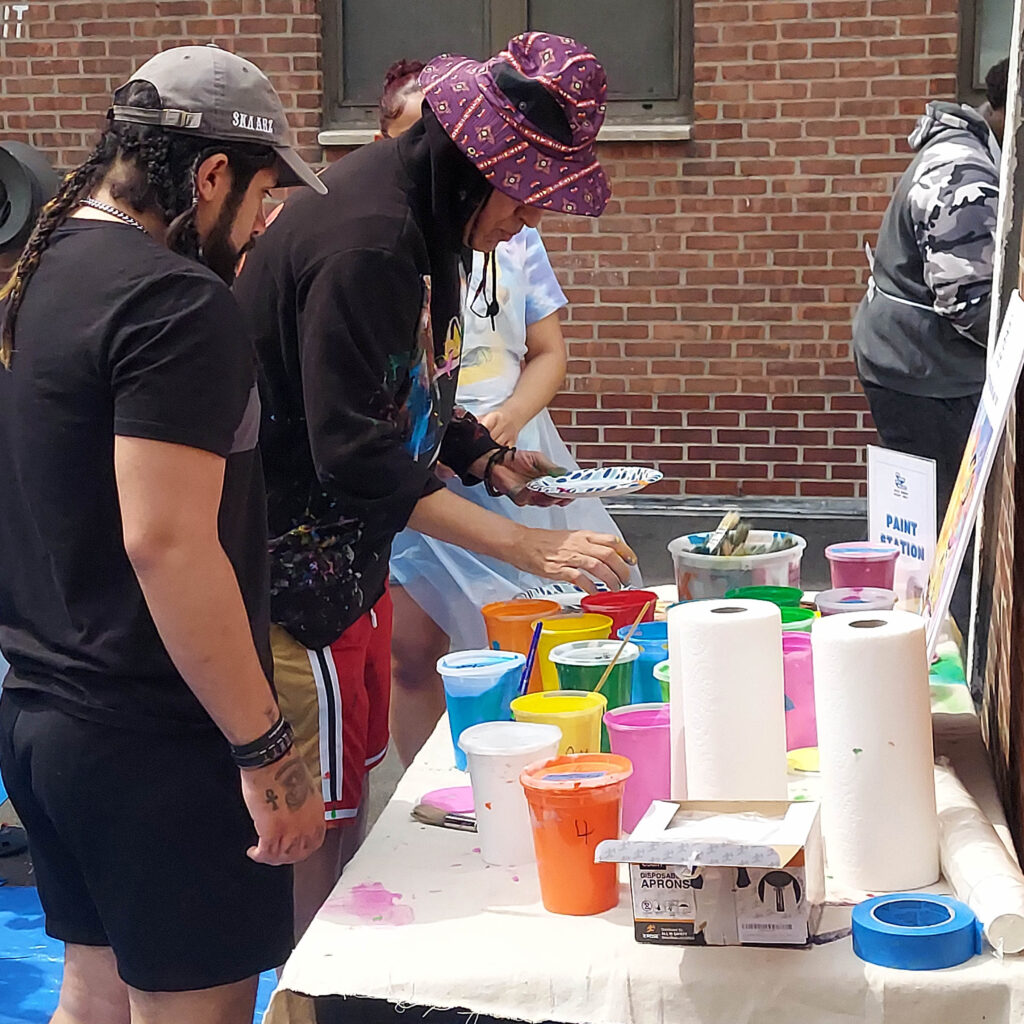
Photo by David Greene
Dawkins said he and his colleagues also collaborate with other groups. “We’ve worked with Neighborhood Benches; they are another not-for-profit organization that works with young people who have been impacted by crime,” he said. “We have the SUV [Stand Up to Violence] folks [a cure violence program] that collaborate with my surrounding cornerstone and that’s with Pelham Cornerstone and Gun Hill Cornerstone, but this program, per say, it operates out of the main site at 3450 Dekalb [Avenue].” Click here for more information on the referenced cornerstone programs.
Dawkins continued, “On July 1, we will focus on training some of our young people that will have completed the program to be mentors so that they can see not only the benefits, but also to empower themselves and to educate their peers. Because most often, what happens is the adults are the ones that say ‘Don’t do this or don’t do that,’ versus if it comes from their peers, they’re more inclined to be responsive.”
He added, “We want them to get the full advantage of the program, so once they complete that, we have a ceremony. We give out certificates and we continue. We just don’t leave them hanging. We follow them through. Some of them may part ways because they’ve gotten a job or they had gotten their GED, but we also have those individuals who have completed [the course] and want to give back.”
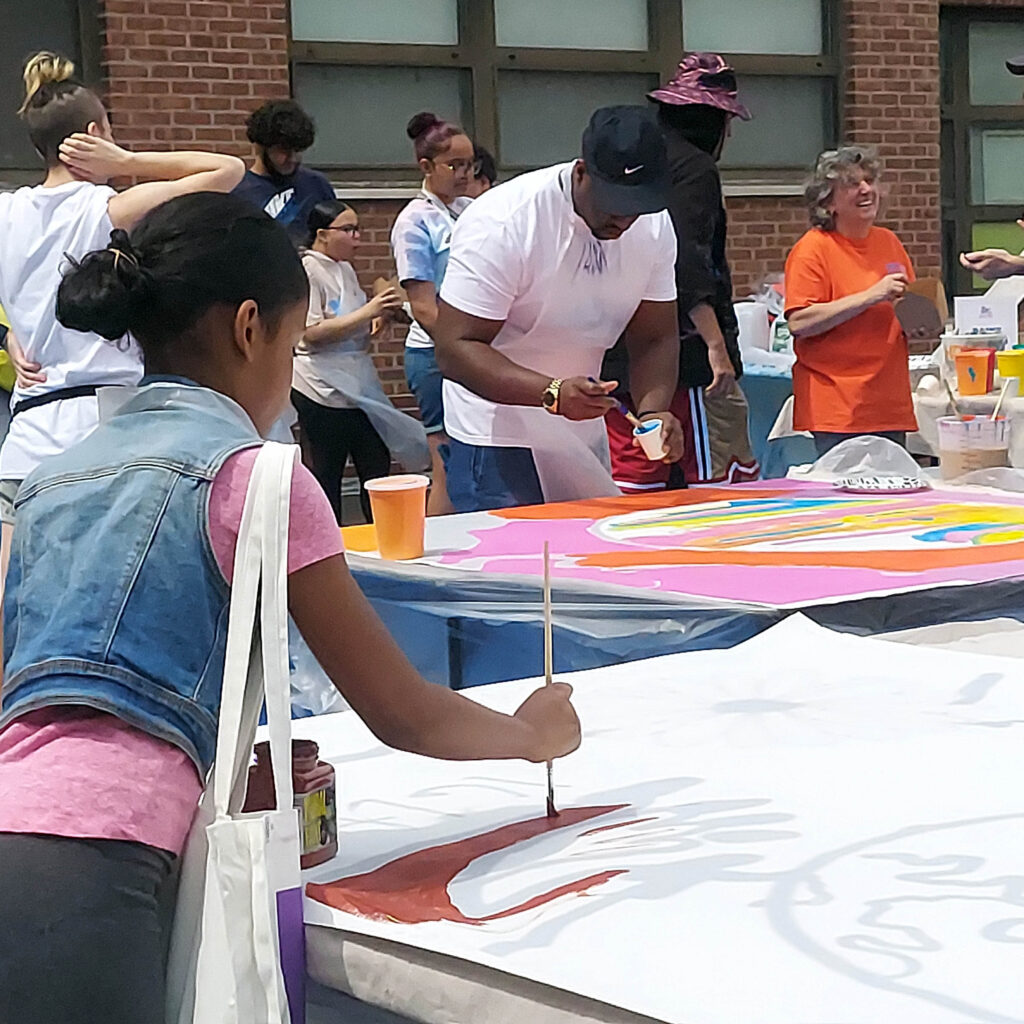
Photo by David Greene
Dominic Smith, preventive director with the Restorative Justice Program, also oversees the Oasis Clubhouse drug prevention program. He said in addition to NYC Mural Arts Project, other entities involved with the project are Homeward NYC, and Brooklyn Community Services. Speaking to Norwood News on the day of the mural painting, Smith said, “This is a community event; we want the community to get involved.”
Since May was Mental Health Awareness Month, Smith explained that the group had some people from MMCC’s special needs program and mental health program involved in the mural painting event and that some of the colors chosen were “mental health colors.” He said the group also wanted the community involved in order to let residents know about the resources available to them at MMCC, which he said also included Supplemental Nutrition Assistance Program (SNAP) benefits assistance, immigration and legal assistance, and food pantry help.
Smith said the Restorative Justice Program is also a collaboration with NYC Department of Probation, for youth who are affected, involved, or impacted by crime. “These are some of them right here,” he said. “These are some of the young ladies, because we have young ladies involved as well… so we got them out here, having fun and giving them a good time.”
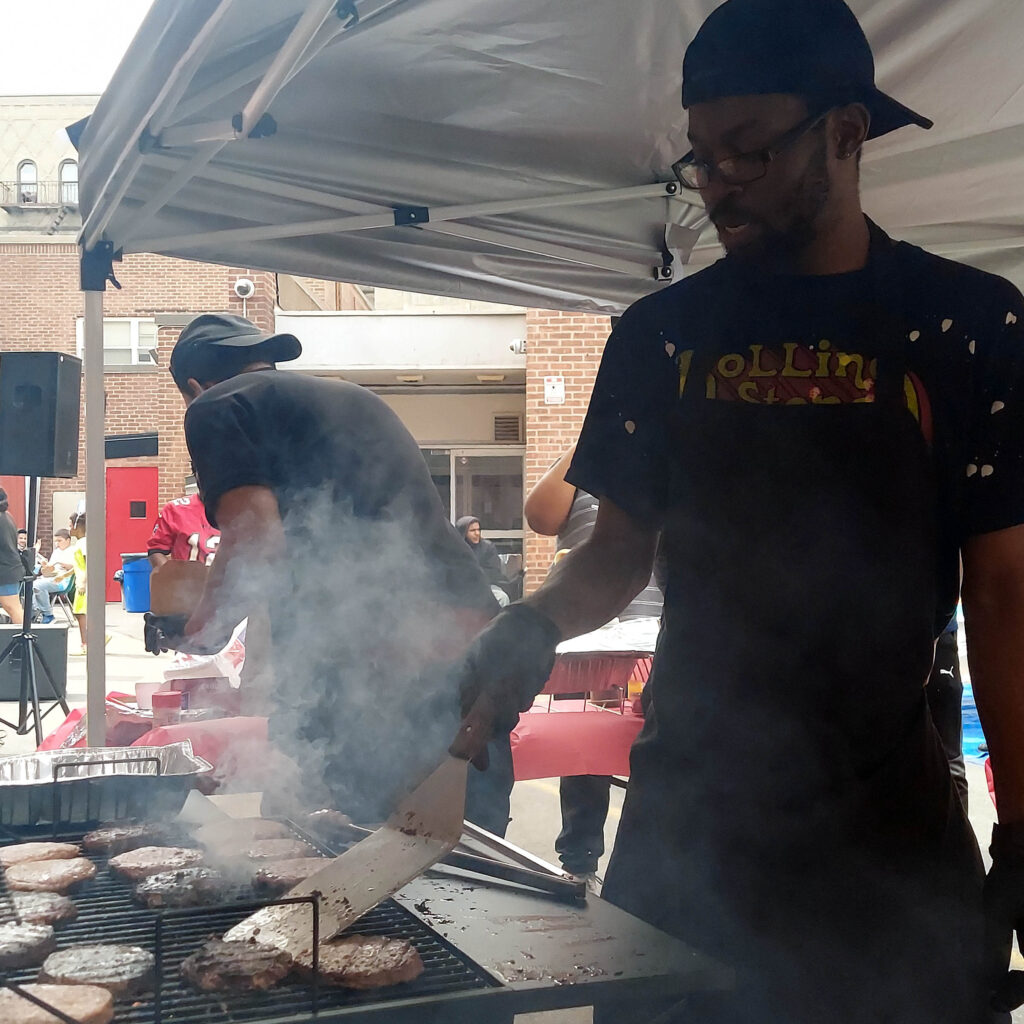
Photo by David Greene
Smith said each group was creating a section of the mural and that they would later put it all together and place it on the side of the MMCC building.
We also spoke to Javon, 20, from Norwood on the day of the mural painting and asked how long he had been with the program. “I’ve been here about five or six years and the program does good,” he said. “Dom is my mentor, but he does a lot more and gives a lot of opportunity to see how the world works, because school is not preparing you to do that.”
Of the program itself, Javon added, “It makes an improvement. Now that the youth is involved, it gives us more of a different view of the world. That’s one thing that I appreciate about it, because he wants to bring the youth, to make us make better decisions in life.”
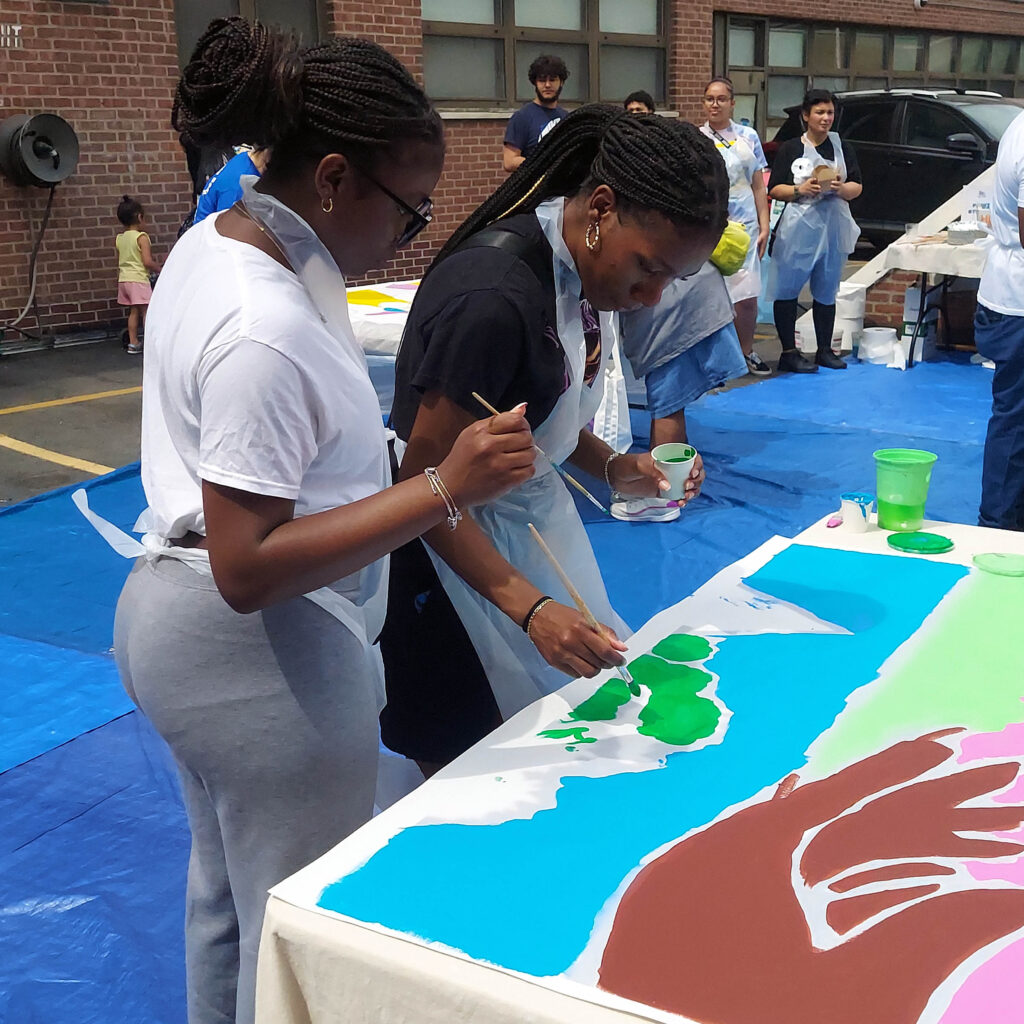
Photo by David Greene
Asked if the program had helped him, personally, Javon said, “Yeah.” He added that he also had friends from home in the program. Asked about the theme for the mural, he said, “Honestly I don’t know. They just sort of chose the colors so from my point of view, it’s unity.” Part of the mural depicts the earth.
Meanwhile, Ryan Patrick, program manager at NYC Mural Arts Project, told us, “We use mural making as a tool to erase the stigma associated with mental illness. It’s reported that at least one in five New Yorkers experience a mental health condition, so the New York City Department of Health and Mental Hygiene essentially wanted to create a program that kind of confronted how popular [common] it is to have a mental health condition, but how prevalent the stigma remains.”
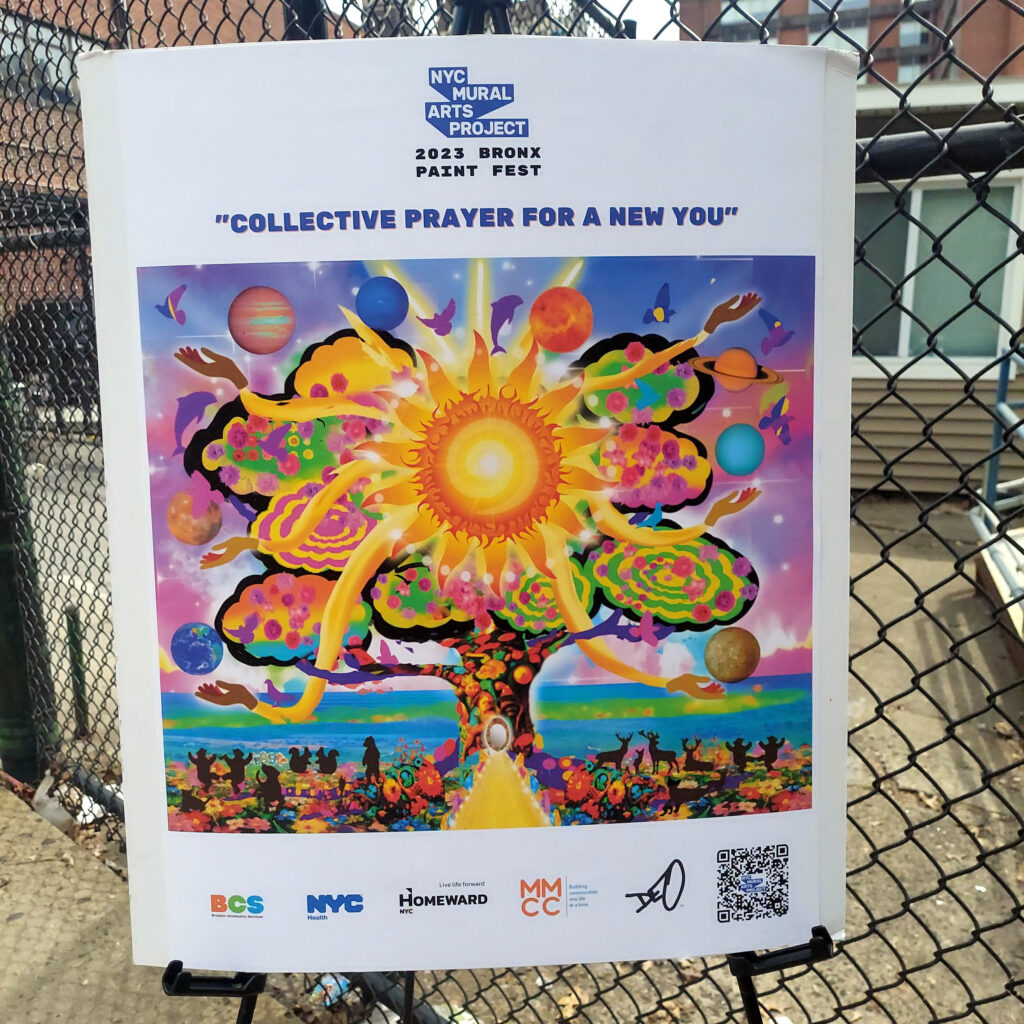
Photo by David Greene
Patrick added, “They determined that essentially one of the best ways to reduce stigma is by bringing folks together in a shared space. People who have a serious mental illness and the neighborhood [residents] at large just talk about their experience. So, we kind of use the mural as a vehicle to have those conversations. We’ve been partnering with a really great non-profit called Homeward NYC; they offer housing to LGBT young adults who live with mental health conditions and our artist, Paul Dio, has been leading weekly art workshops there in addition to our community programs here at MMCC.”
Patrick said they forged “a really lovely” neighborhood collaboration where they invite the public to the programs and the public then create the theme for the murals using the mental health conversations as a basis to decide what they want to see on their neighborhood mural.
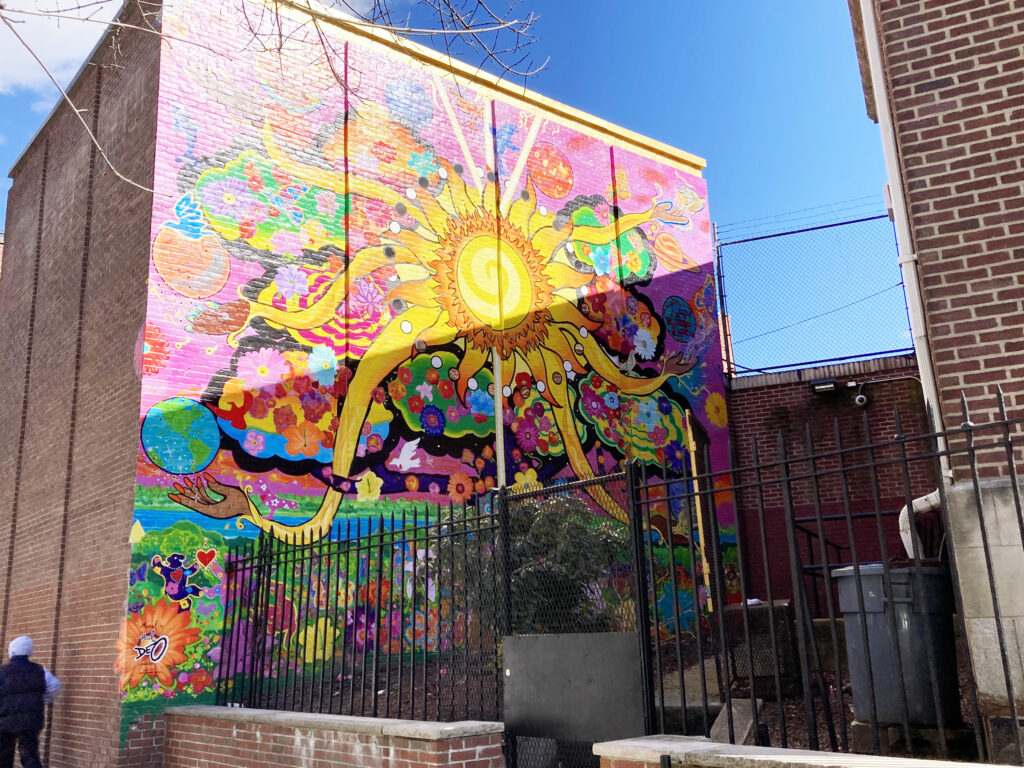
Photo by Síle Moloney
Asked if NYC Mural Arts Project provided the canvas and paints, Patrick said, “Right now, we’re using poly-tabs, and essentially we print the outline of the mural on these panels, and then we’ll come out in June and actually like wallpaper and peel them to the side of the building and it will live there forever. We’ll seal it up with varnish and anti-graffiti gel and then the piece hopefully lives there forever.”
Asked if NYC Mural Arts Project was based in Brooklyn, Patrick said, “We are. The city used to run the program until the pandemic and then they kind of put the contract up for auction through an RFP process, and it was awarded to a really amazing non-profit called Brooklyn Community Services who collaborates with other nonprofits throughout all five boroughs. So, we’re based in Brooklyn but our work extends from Staten Island, we were in Jamaica, Queens last year, we’re working in Harlem this year…….. obviously The Bronx.” The project and Request for Proposal (RFP) had previously been presented at a local Bronx Community Board 7 meeting.
Asked how the young participants were enjoying the mural painting, Patrick said, “Everyone had great feedback. Everyone seems really excited. I think people really like the opportunity to feel like change agents in their community and the mural gives them an opportunity to make their voice heard and rally behind a piece of public art.”
To read some of our previous stories on MMCC, click here and here.




